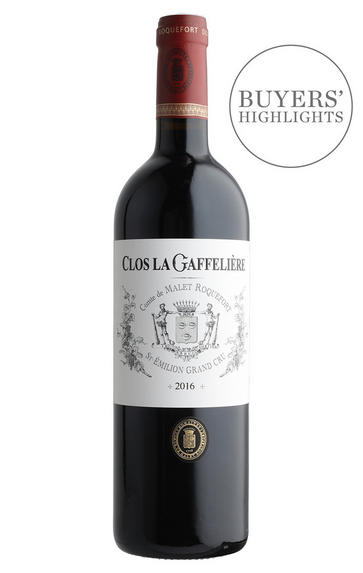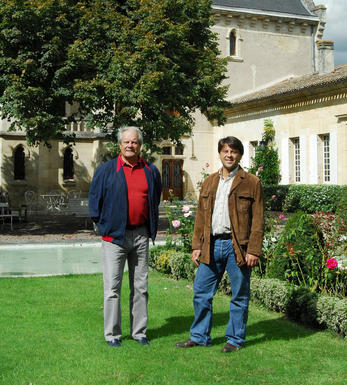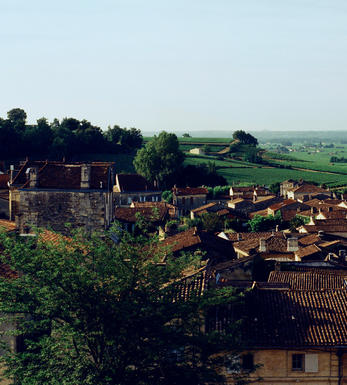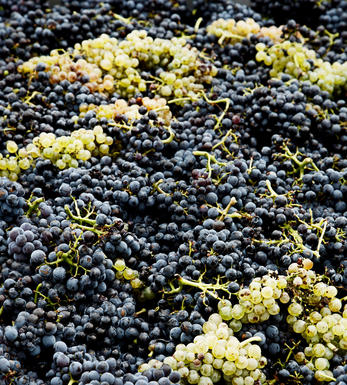
2016 Clos La Gaffelière, St Emilion, Bordeaux

Critics reviews
Vivid and fruity with hints of blackberry and mineral undertones. Medium to full body, tight palate. Savory and delicious already.
James Suckling, jamessuckling.com (Apr 2017)
A little tighter than the 2015, this is good quality but needs shaking out with a few hours in a carafe. Once it unfurls, you get rose petals on the nose and touches of bitter cherry on the finish. It's worth noting that, as of this 2016 vintage, Clos Gaffeliere is no longer the same blend as Dame de la Gaffeliere (they were alternative names of the second wine depending on the export market) - this is a little more serious in style, while Dame is a little more fruity and often 100% Merlot.
Drink 2020 - 2026
Jane Anson, Decanter.com (Mar 2019)
The second wine of La Gaffelière and made with consulting advice from Claude Gros, the 2016 Clos La Gaffelière is based on 85% Merlot and 15% Cabernet Franc brought up in a mix of barrel and concrete. It’s an elegant, medium-bodied Saint Emilion with good complexity (black cherries, gound earth, damp earth), moderate tannins, good concentration, and a clean, length finish. It’s upfront and ready to go, but I suspect it will keep for 10-15 years or more on its purity and elegance.
Drink 2019 - 2034
Jeb Dunnuck, jebdunnuck.com (Feb 2019)
About this WINE

Chateau La Gaffeliere
Château La Gaffelière is owned by Léo de Malet Roquefort, and the 22 hectare property produces on average 10,000 cases per year. Located in the centre of the St. Emilion appellation, due south of St. Emilion town, the property shares a similar climate to that enjoyed by both St.Emilion and Pomerol: more continental than the maritime Médoc, with generally more spring rainfall, though less in summer and winter.
La Gaffeliere's vineyards (Cabernet Sauvignon 5%, Merlot 65%, Cabernet Franc 30%) lie on a sloped sandy/clay-limestone topsoil and limestone subsoil (a mix of Côtes and Pieds de Côtes). Fermentation takes place in stainless steel followed by extended wood maturation, with 33% of the barells being renewed annually.
La Gaffeliere is classified as a 1er grand cru classé(B).

St Émilion
St Émilion is one of Bordeaux's largest producing appellations, producing more wine than Listrac, Moulis, St Estèphe, Pauillac, St Julien and Margaux put together. St Emilion has been producing wine for longer than the Médoc but its lack of accessibility to Bordeaux's port and market-restricted exports to mainland Europe meant the region initially did not enjoy the commercial success that funded the great châteaux of the Left Bank.
St Émilion itself is the prettiest of Bordeaux's wine towns, perched on top of the steep limestone slopes upon which many of the region's finest vineyards are situated. However, more than half of the appellation's vineyards lie on the plain between the town and the Dordogne River on sandy, alluvial soils with a sprinkling of gravel.
Further diversity is added by a small, complex gravel bed to the north-east of the region on the border with Pomerol. Atypically for St Émilion, this allows Cabernet Franc and, to a lesser extent, Cabernet Sauvignon to prosper and defines the personality of the great wines such as Ch. Cheval Blanc.
In the early 1990s there was an explosion of experimentation and evolution, leading to the rise of the garagistes, producers of deeply-concentrated wines made in very small quantities and offered at high prices. The appellation is also surrounded by four satellite appellations, Montagne, Lussac, Puisseguin and St. Georges, which enjoy a family similarity but not the complexity of the best wines.
St Émilion was first officially classified in 1954, and is the most meritocratic classification system in Bordeaux, as it is regularly amended. The most recent revision of the classification was in 2012

Other Varieties
There are over 200 different grape varieties used in modern wine making (from a total of over 1000). Most lesser known blends and varieties are traditional to specific parts of the world.


Buying options
Add to wishlist
Description
The delightful, vibrant Clos La Gaffelière is the perfect chance to experience the winemaking expertise of Château La Gaffelière. Merlot dominates in this St Emilion red, bringing vivid aromas of ripe red berries and tart cherry, while a touch of Cabernet Franc (10%) further lifts its fresh, aromatic profile. A ribbon of minerality runs through a rounded palate that’s full of soft red fruits and juicy blackberry. This is a joy to savour, and a perfect wine to drink with a Sunday roast.
Drink now – 2026
Victoria Bull, Assistant Wine Buyer, Berry Bros. & Rudd (Apr 2022)
wine at a glance
Delivery and quality guarantee